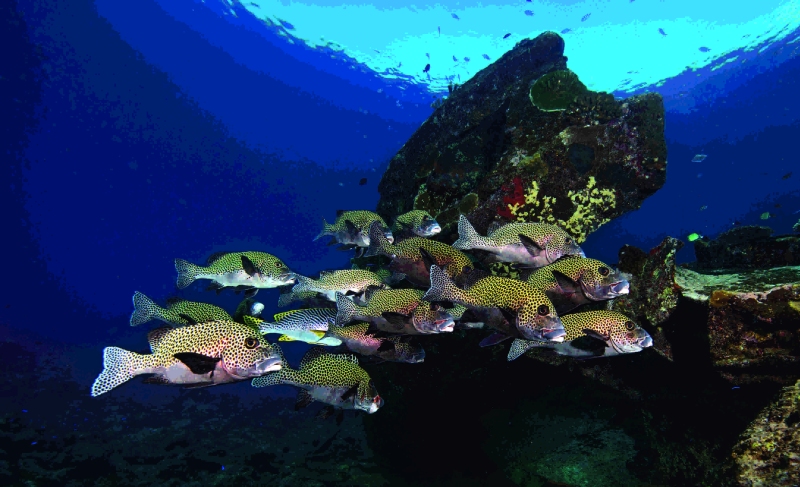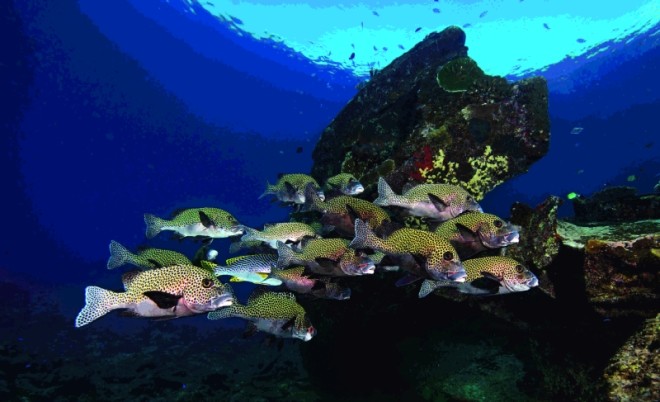
I don’t remember sleeping that night while the boat rocked back and forth,” writes Teresa “Tet” Lara, underwater photographer, of her unforgettable first visit in March 1996 to the Tubbataha Reefs, onboard what was then the Aquastar.
It was a rough start to what was to be a wonderful, 20-year love affair, as Tet and her dive buddy and friend, underwater cinematographer Marissa Floirendo, would return almost every year to the iconic marine park, the Philippines’ premier scuba-diving site and a United Nations Educational, Scientific and Cultural Organization (Unesco) World Heritage Site, the only purely marine heritage site in Southeast Asia.
Thus did Tet accumulate several years’ worth of stunning photographs.
Last May, I received a call from Marissa: “I think it’s about time we put together a book on Tubbataha, but we don’t know how to write it. Will you help us?” Of course I would, I said—and of course I did.
“Tubbataha: A National Treasure,” featuring photographs by Tet Lara, text by yours truly, design by Felix Mago Miguel, and essays by some of the country’s leading scientists, will be launched on Nov. 9.
The hefty tome—268 pages, 231 pictures—published by the AOF Foundation, will contribute to the protection and preservation of the Tubbataha Reefs Natural Park—easily one of the most beloved places on the planet for many scuba divers, including Filipinos who have been visiting it for years.

Tet herself calls it “my special place,” the title of her essay at the end of the book. Her piece opens with the aforementioned account of her first voyage on a live-aboard dive boat—the only way to get to the reefs, via an overnight, 150-kilometer sail from Puerto Princesa, Palawan.
Very first photo book
Although it is primarily a pictorial journey—incredibly, the very first photo book to be published on Tubbataha—we were in immediate agreement that it should also contain substantial information on the place. Thus, we came up with an outline covering a range of perspectives, from historical mentions of the place in British nautical records of the 18th century, to its importance as a rich spawning ground, feeding fisheries well beyond its borders.
We recognize its importance as a unique and critical ecosystem and as a dive tourism destination, and chronicle the milestones in its protection from the 1970s to the present, under the stewardship of the Tubbataha Protected Area Management Board (TPAMB) and the dynamic Tubbataha Management Office (TMO).
Tubbataha’s maverick of a Protected Area superintendent, Angelique Songco, and her team of dedicated Marine Park Rangers get special mention. We relied heavily on information from the TMO, a case study on the reefs by the Worldwide Fund for Nature (WWF)-Philippines and, most significantly, on the only book ever published on the reefs: the 1994 book “Tales from Tubbataha” by journalist Yasmin Arquiza and marine biologist Alan White.
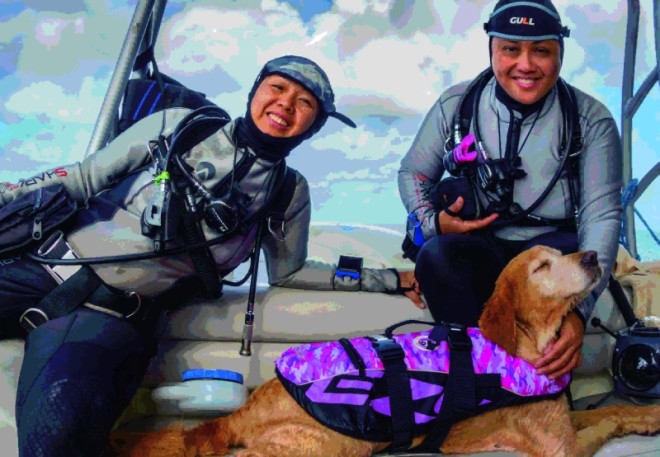
Although I wrote the matrix of the text, we also decided that we needed to hear from experts in various fields, all of whom rose to the occasion and wrote splendid essays on the Tubbataha they know.
Renowned coral experts and marine biologists Al Licuanan and Perry Aliño write on Tubbataha’s richness, resilience and uniqueness. Conservation and wildlife authority Dr. Teri Aquino touches on the web of biodiversity, while fisheries specialist Dr. Hazel Arceo expounds on its importance as a food source.
Ornithologist Arne Jensen discusses Tubbataha’s topside value as an important seabird rookery, Arquiza recalls the early days of reporting on the reefs, and Songco, who also served as editorial consultant, contributes her piece on managing a national heritage.
‘Living jewel’
Tet and Marissa were particularly thrilled to have a foreword written by arguably the greatest living underwater photographer on the planet, National Geographic’s David Doubilet, whom the two met during their extensive travels, and who joined them on one memorable trip to Tubbataha.
“Tet Lara’s imagery is a body of work spanning two decades of devotion to this living jewel,” he writes. “Her pictures are intimate, poetic, and powerful.”
As for the reefs, he says succinctly, “I have seen nothing like it in five decades under the sea.”
In her publisher’s note, Marissa notes how we all share a passion for Tubbataha. Indeed, on my visit last May, I was genuinely thrilled to discover that the reefs, which had gone from gorgeous, to battered by destructive fishing and alien species infestation, are again very much alive and well, a true testament to nature’s power.
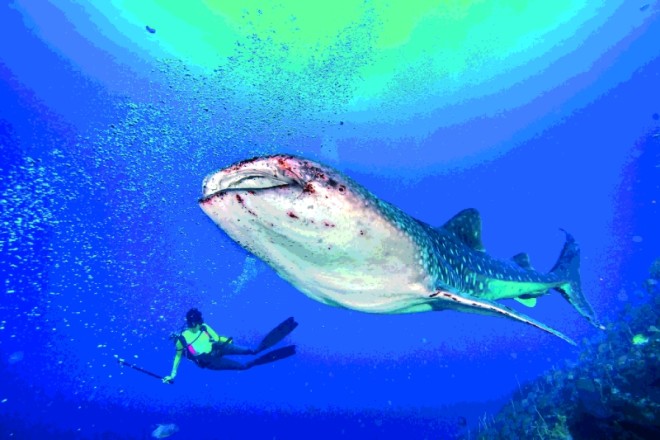
Divers are still talking about the phenomenal 2015 dive season, when whale sharks, formerly rarities in the area, had shown up on almost every single dive.
If you’re a Filipino scuba diver, it behooves you to make your own pilgrimage to this Holy Grail of Philippine diving before you even think of going elsewhere.
The trip is expensive, no doubt, but the reefs of Tubbataha are unparalleled in richness, diversity of marine life (read: sharks galore) and exciting currents.
[Related story: Going to Tubbataha? Here’s what you should know]
And the topography! There are mind-boggling walls, wild coral gardens, picturesque sandy areas and drop-offs that plummet down to untold depths. It’s not an easy place to dive, but when you’re ready and able, it’s the adventure of a lifetime. No wonder Marissa and Tet are incurably hooked.
Even if you don’t dive or will never make your way to Tubbataha, it is still good to know that a natural wonder of global importance and beauty exists right here in Philippine waters—a national treasure, indeed. Even vicarious enjoyment is possible as you gaze upon Tet’s incredible shots of schooling bumpheads, burping whale sharks, a family of marble rays huddled together, and Bird Island, gloriously packed with terns and boobies.
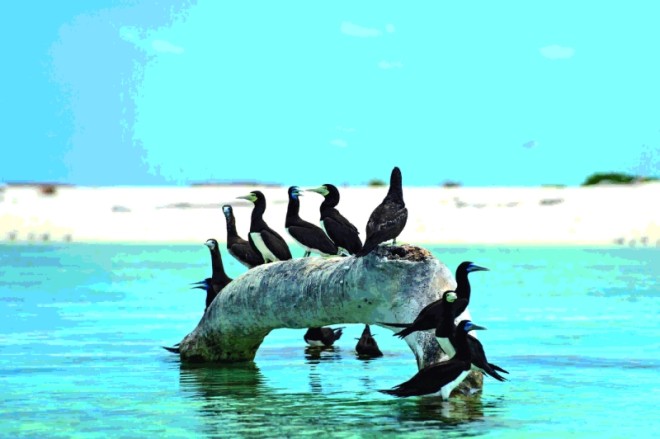
“Many people do not have a chance to visit Tubbataha,” notes Songco. “Marissa and Tet bring Tubbataha to them through this book. It shows how lucky we are as a nation to have been given this treasure, and how great is our responsibility to the world to care for it for the rest of humankind.”
Check out the Facebook page of “Tubbataha: A National Treasure,” or e-mail [email protected]

